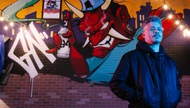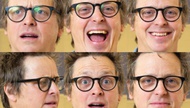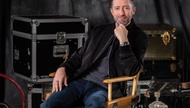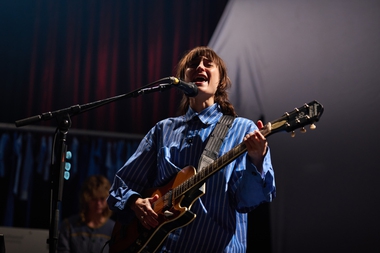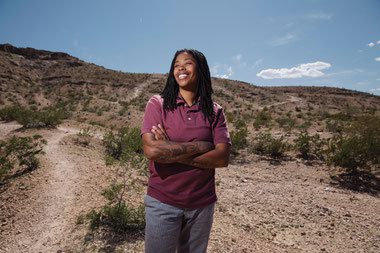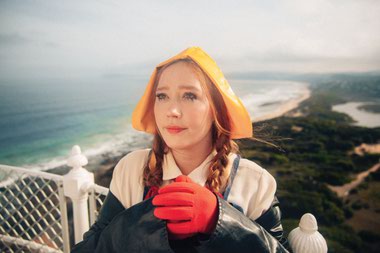Ranch life shaped Jeanne Sharp Howerton.
Growing up on her family’s land in Nye County, she immersed herself in the day’s tasks. “I would spend hours sitting on a tractor,” she says. “My dad would mow the hay, and I would rake, put the hay into rows for hours at a time, then my sister would bail it.”
TV and running water were nonexistent on the ranch. “So much of the world came to our door,” she says. “We were so distant from other places that people would stop just to make contact.”
But the sisters had creativity on their side. They’d invent games in their downtime, sing songs, ride horseback and memorize poems. And before daybreak, when the air was at its stillest, they’d go outside to watch “the flash.”
“We’d actually go back and get into bed after ‘the flash,’” Sharp Howerton recalls. “Then 10 minutes later, it would hit the house.”
“The flash” was a hydrogen bomb, set off during the 1950s at the Nevada Test Site, about 100 miles north of Sharp Howerton’s family ranch and 65 miles from northwest Las Vegas.
“I remember it shook the house so hard. Our house is 150 years old, it was moved over from a mining camp, and I was so worried; the bed was shaking,” she says. “Then we’d get up an hour or so later to go out and do chores.”
Hundreds of nuclear tests—atmospheric and underground—were conducted at the Nevada Test Site from the 1950s until the early ’90s. Sharp Howerton chronicled her experiences in her diaries, which she later published as 1957: Diary of a Nevada Ranch Girl (Central Nevada Historical Society, $20).
Today, the 75-year-old historian, author and former elementary school teacher writes about the places where she grew up. In June, she shared her story at the National Atomic Testing Museum. And she recently sat down with the Weekly to chat about her love for history and why she isn’t resentful of her atomic past.
When did you begin digging into your past? I’ve always been interested in history, even as a little girl. When my dad and I would go riding up in the mountains, I was always asking him, what’s this place? And why is this place named this? I would make little notes to myself about things. It’s like I knew what I wanted to be.
My dad kept diaries, so I wanted to keep a diary. I told my family, and my parents bought a little notebook for 25 cents as my Christmas present. I started that in 1957, and I kept it every single day. … Now I’m full-time writing history books, trying to get down the history of the areas where I lived, because probably nobody knows as much about them as I do.
The mention of the tests in your diaries feels like just another background detail of your life. Were you ever fearful of them when you were growing up? We didn’t have a big fear of them. We just lived with them. Now looking back, I think, what the heck were you doing to us? How could you just tell us everything was fine? I realize now that it was very unfair to people, but that’s just what they did.
Do you feel any resentment for having been subjected to the fallout from those tests? I don’t feel resentment. I don’t feel anger. I just think, what the heck were they doing to us? I’m astonished. But I’m also astonished that life isn’t like I thought it was when I was a little kid. … I even got cancer from the bombs. When I got diagnosed, I just thought, I’m gonna get my $50,000 [through the Radiation Exposure Compensation Act]. It helped.
What motivates you to keep uncovering history around the places you grew up? It’s like going on a treasure hunt and trying to ferret out who was there and why they were there. I love being able to find out more.
This one area I’m doing, Silver Canyon, was a mining camp in 1865. In 1868, my great-grandfather brought his family, and they moved up there. He was a blacksmith. ... We went to Silver Canyon a couple of months ago, [and] I’m walking by this one rock house. I thought, well that’s odd. In the middle of this room, there’s a tree stump that’s been sawed off, kind of where they put anvils. I started looking around, and back in the corner, there was an area that looked like it was a kiln to heat up the metal. I thought, I think I found my great grandfather’s blacksmith shop.
It’s amazing you were able to put all that together. I like looking at big picture … how these pieces fit together. It’s like a puzzle. If you do that, you get a whole different view of history. Nothing is in isolation. Everything has context.
Click HERE to subscribe for free to the Weekly Fix, the digital edition of Las Vegas Weekly! Stay up to date with the latest on Las Vegas concerts, shows, restaurants, bars and more, sent directly to your inbox!

